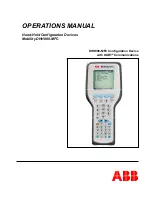
Copyright 2008 Unitech Electronics Co., Ltd. All rights reserved. Unitech is a registered trademark of Unitech Electronics Co., Ltd.
19
Recharging the Battery
When the terminal shows the “Main Battery Low” message, the battery needs to be
recharged
(See ‘Charging the Battery’ in Chapter 1 of this manual)
. When the battery
is fully charged, the LED light will turn green. Charging time typically takes two to three
hours.
Charging Consideration
It is important to consider the temperature when charging the Lithium-Ion battery pack.
The charging process is most efficient at normal room temperatures or slightly cooler.
It is essential to charge the battery within the stated range of 32°F to 113°F (0°C to
45°C). Charging the battery outside of the specified range could damage the battery
and shorten its life cycle.
Effects of Overcharging Batteries
Overcharging may occur when a Lithium-Ion rechargeable battery is continually
charged for extended periods after it has reached full charge capacity. For example,
a battery left to charge for several weeks may appear to have minimal capacity. This
type of failure can be remedied by completely depleting the battery of power and then
recharging it to full capacity.
This condition can be prevented by immediately unplugging the power cable when
the unit reaches full charge, or by using the cradle to charge the batteries. The cradle
starts the charge process in Quick Charge Mode and switches to Trickle Charge Mode
when it detects the battery is fully charged. There is no risk of overcharging in Trickle
Charge Mode.
Storage and Safety Precautions
Batteries should be stored where there is no risk of accidental shortage or other
damage. Although charged Lithium-Ion batteries may be left unused for several
months, their capacity may be reduced due to back up and internal resistance. If this
happens, they will require recharging prior to use. Lithium-Ion batteries may be stored
at temperatures between -4°F and 158°F (-20°C to 70°C).



































